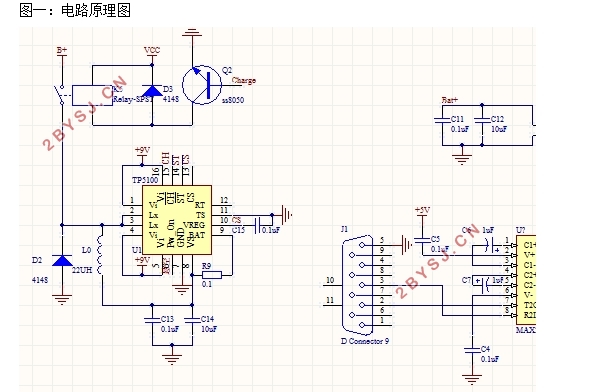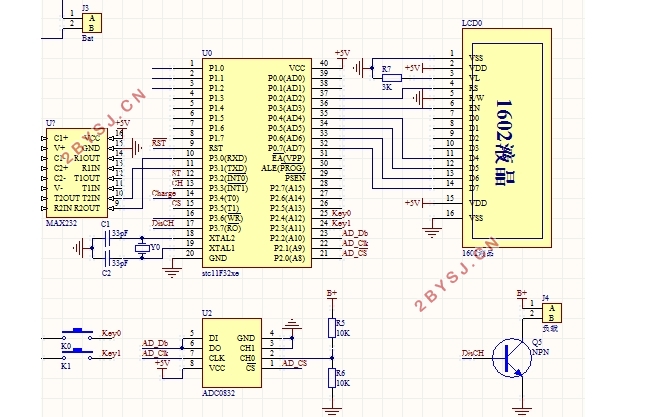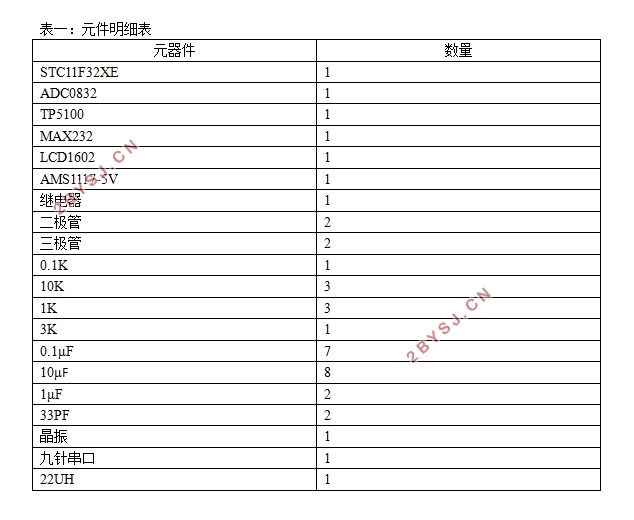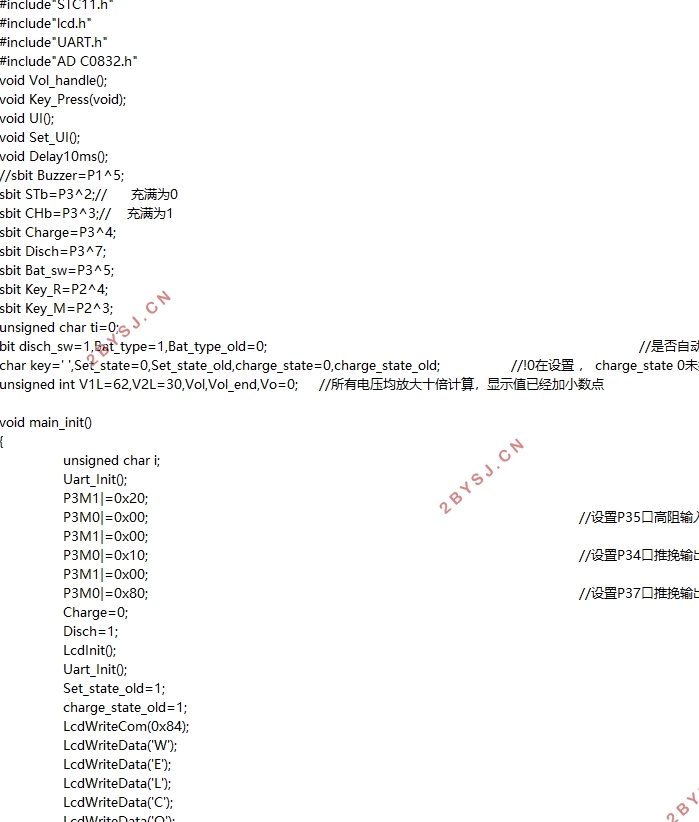锂电池智能充电系统设计
无需注册登录,支付后按照提示操作即可获取该资料.
锂电池智能充电系统设计(论文12000字,参考程序)
摘要:随着电子信息产品的广泛使用,锂电池以优异的性能在电子科技领域占领了一席之位。本文利用STC11F32XE单片机的最小单片机系统结合ADC0832模数转换器来监测锂电池的电压,然后将监测的电压反馈给TP5100电源管理芯片利用充电控制模块和放电控制模块对锂电池进行充放电管理,其中整个过程利用LCD1602液晶显示及按键模块实现人机交互。锂电池智能充放电器,以较低的成本,控制锂电池充放电过程,防止锂电池过充或者欠充现象,使锂电池的使用寿命在很大程度上延长了,提高了锂电池的充电效率。
关键词:智能充放电器;锂电池;STC11F32XE;TP5100
Design of Intelligent Charging System for Lithium Battery
Abstract:With the wide use of Electronic information products,Lithium battery with excellent performance occupied a seat in the field of Electronic Science and technology field.In this paper, we design the lithium battery intelligent charging and discharging equipment to prevent the lithium battery charging or leakage,mainly use the smallest single-chip microcomputer system of STC11F32XE combined with ADC0832 to detect the voltage of lithium battery.Then the voltage feedback to the TP5100 lithium battery management chip and the TP5100 charges the lithium battery charging and discharging management,through the charging module and discharge module.In which the whole process using LCD1602 display and button module to achieve human-computer interaction.The design of the low cost controls the lithium battery charging and discharging process,extended the life of the lithium battery and improve the charging efficiency of the lithium battery.
key word:Intelligent charging and discharging equipment;lithium battery;STC11F32XE ;TP5100
2.1总体电路分析
锂电池智能充电系统需要实现对不同的锂电池进行智能充放电控制的功能,整个电路由单片机最小系统模块、电压信号检测模块、充电控制模块、放电控制模块、RS-232串口通信模块和液晶显示与按键控制模块构成。本设计的主要原理是通过电压信号检测模块来判断接入电池是否为单节锂电池,如果是单节锂电池则采集其电压,否则采集双节锂电池电压,将处理后的电压信号输送到单片机进行处理,然后将处理后的信息发送给电压管理芯片来判断是给单节还是双节锂电池进行充电,充电主要是通过充电控制电路或者将电压信号传递给放电控制电路对锂电池进行放电控制,在整个过程中由按键和液晶显示器来控制及显示电路进程,串口通信模块在锂电池智能充电器中主要扮演着将电路与计算机相连,然后将电池的电压信息传递给计算机的角色。




目 录
1绪论 1
1.1课题背景 1
1.2智能充电器的发展 1
1.3设计任务和要求 2
2设计方案的选择与论证 2
2.1总体电路分析 2
2.2方案论证 3
2.2.1 主控芯片选择 3
2.2.2 显示模块的选择 3
2.2.3 充电方式 4
3系统的硬件设计 4
3.1单片机最小系统设计 5
3.1.1单片机选型 5
3.1.2单片机最小系统组成 5
3.2电压信号采集模块 6
3.2.1信号采集芯片选型 6
3.2.2 电压检测电路原理 6
3.3 充电模块 7
3.3.1电源管理芯片选型 7
3.3.2充电电路原理 8
3.4放电模块 11
3.5 RS-232模块 11
3.6显示与按键控制模块设计 12
3.6.1液晶显示模块 12
3.6.2按键控制模块 13
4系统的软件设计 14
4.1软件开发环境简介 14
4.2 软件总体开发设计 14
5电路的调试 15
5.1硬件电路的焊接 15
5.2 系统的调试 16
6总结评价 16
参考文献 18
致谢 19
附录 20
